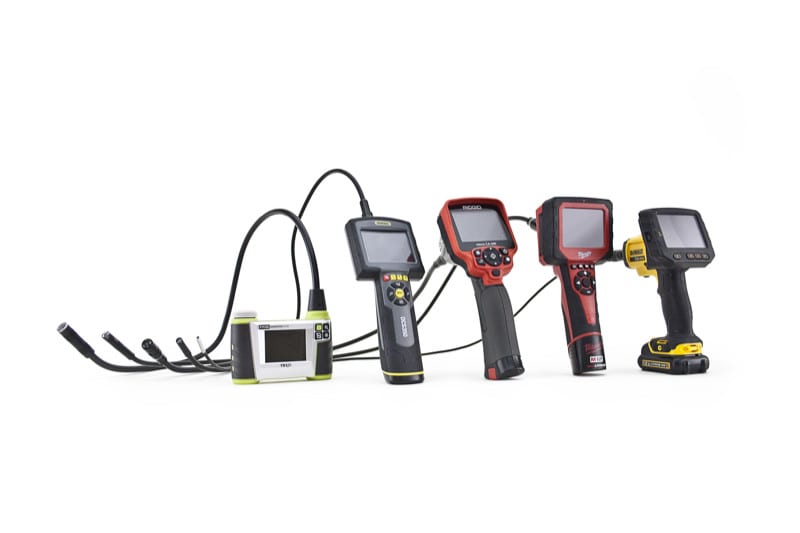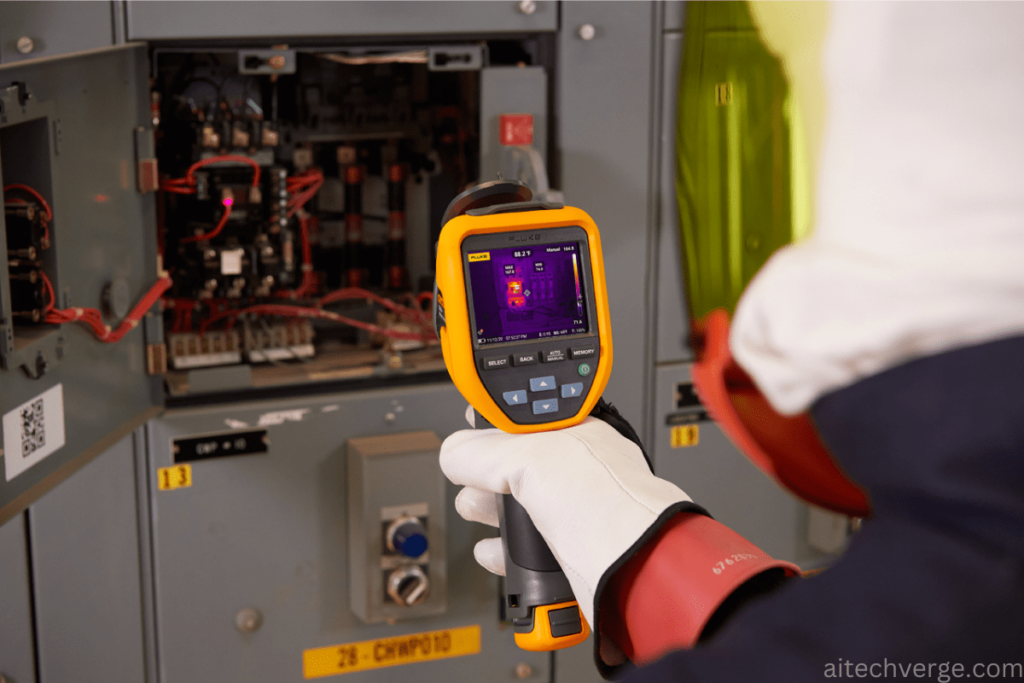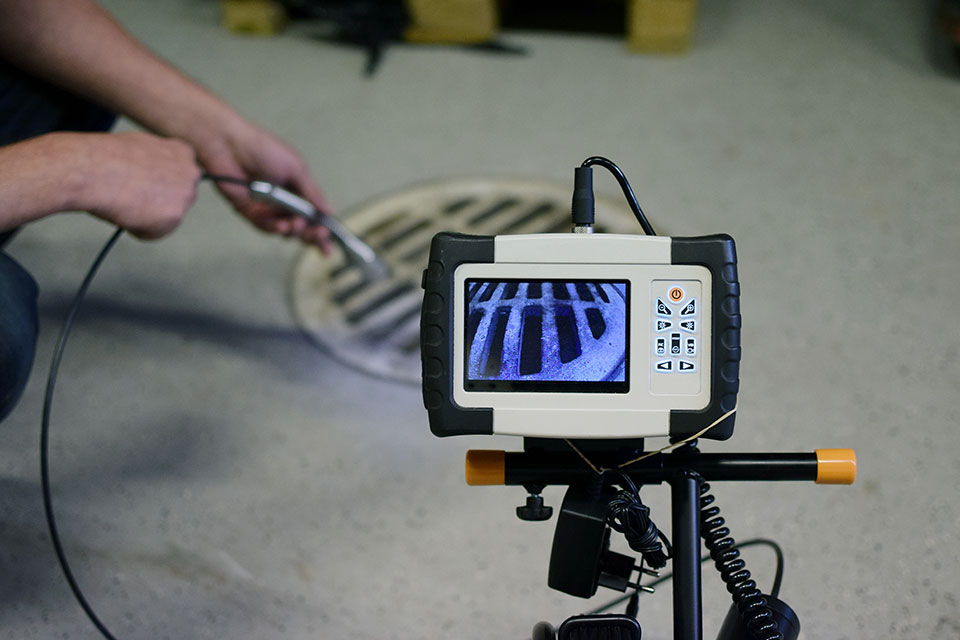“Get ready to uncover the unseen! Inspection cameras are the unsung heroes of modern technology, allowing us to explore hidden spaces and uncover secrets that lie beyond the reach of the human eye. From detecting defects to diagnosing problems, these cameras play a crucial role in various industries. But what exactly are inspection cameras and how do they work their magic? Let’s dive in and discover their purpose and potential!”
Types of Inspection Cameras: A Closer Look

Inspection cameras come in a variety of shapes, sizes, and functionalities, each designed to cater to specific needs and industries. Let’s explore some of the most common types, along with real-life examples and applications.
Wired Inspection Cameras:
These cameras are connected to a monitor or recording device via a cable, providing a constant power supply and high-quality video transmission. Think of a plumber using a wired camera to inspect a clogged drain or a mechanic using one to diagnose engine problems.
Wireless Inspection Cameras:
Offering greater flexibility and convenience, wireless cameras transmit video signals to a monitor or smartphone via Wi-Fi or Bluetooth. Imagine a homeowner using a wireless camera to inspect their attic or a construction worker using one to monitor a hard-to-reach area.
Video Scopes:
These portable, handheld cameras feature a flexible probe and high-resolution display, ideal for quick inspections and troubleshooting. An HVAC technician might use a video scope to inspect air ducts, while a doctor might use one to examine a patient’s internal organs.
These examples illustrate how different types of inspection cameras serve various purposes, from routine maintenance to complex diagnostics. By choosing the right type of camera, professionals and DIYers alike can uncover hidden issues, save time, and enhance their work.
Camera Specifications: A Critical Evaluation

When selecting an inspection camera, it is essential to carefully consider the key performance parameters to ensure optimal results. This section will delve into the critical aspects of camera resolution, field of view, lighting, and durability.
Camera Resolution:
A higher pixel count is crucial for capturing detailed images. For instance, a 720p camera provides a satisfactory image, while a 4K camera offers exceptional clarity. Consider the application: a construction worker may require a 4K camera to inspect intricate structural details, while a medical professional may demand
for diagnostic purposes.
Field of View (FOV):
The angular coverage of the camera’s lens determines the extent of the observable area. A wider FOV (e.g., 90 degrees) facilitates inspection of expansive spaces, such as industrial facilities, whereas a narrower FOV is better suited for scrutinizing minute details, like mechanical components.
Lighting:
Adequate illumination is vital for capturing high-quality images. Some cameras feature integrated LEDs or lasers to augment lighting in dim environments. Consider the context: a plumber may utilize a camera with built-in LEDs to inspect poorly lit pipes, while an electrician may employ a laser-illuminated camera to examine complex circuitry.
Durability:
Inspection cameras often operate in challenging environments, necessitating robust designs, water resistance, and scratch-resistant optics. Firefighters, for example, require waterproof cameras to inspect smoke-filled structures, while manufacturers need rugged cameras to withstand the rigors of production lines.
By carefully evaluating these critical camera specifications, users can select the optimal tool for their specific applications, ensuring precise data capture and informed decision-making.
Uncovering Hidden Insights: Inspection Cameras in Various Industries

Inspection cameras have become a game-changer across multiple sectors, empowering professionals to uncover hidden issues and make informed decisions. Let’s delve into some real-life examples of their applications in construction, plumbing, HVAC, and beyond.
Construction: Building a Stronger Foundation
- Structural inspections: Cameras help detect damage, cracks, or corrosion in bridges, buildings, and infrastructure, ensuring public safety and preventing costly repairs.
- Concrete pour inspections: Cameras ensure proper concrete filling and detect any voids or defects, guaranteeing a stable foundation.
Meet Jane, a structural engineer who relies on inspection cameras to monitor bridge maintenance. “With cameras, I can identify potential issues before they become major problems, saving lives and resources.”
Plumbing: Flowing with Efficiency
- Pipe inspections: Cameras navigate through pipes to detect blockages, leaks, or corrosion, saving homeowners from costly repairs and messy cleanups.
- Drain inspections: Cameras identify clogs and damage in sewer lines, ensuring a smooth flow and preventing backups.
Consider Mark, a plumber who used a camera to diagnose a mysterious leak in a customer’s home. “The camera revealed a hidden crack in the pipe, allowing me to fix the issue quickly and efficiently – the customer was thrilled!”
HVAC: Heating Up Efficiency
- Duct inspections: Cameras examine air ducts for damage, mold, or debris, ensuring efficient heating and cooling systems and improving indoor air quality.
- Equipment inspections: Cameras monitor HVAC equipment condition, helping prevent breakdowns and prolong lifespan.
Take Maria, an HVAC technician who uses cameras to inspect air ducts. “With cameras, I can show homeowners the exact issues and provide transparent solutions, building trust and loyalty – it’s a win-win!”
Beyond: Expanding Horizons
- Industrial inspections: Cameras monitor equipment condition, detect wear and tear, and optimize maintenance schedules, increasing productivity and reducing downtime.
- Medical applications: Cameras aid in diagnostic procedures, such as endoscopies and laparoscopies, improving patient outcomes and saving lives.
These examples showcase the power of inspection cameras across industries, enabling professionals to work smarter, safer, and more efficiently.
Selecting an Inspection Camera: Critical Factors to Consider
When procuring an inspection camera, several key factors must be carefully evaluated to ensure optimal performance and efficiency. This section will examine the crucial considerations, including cost, image quality, ease of use, and additional features.
Cost: A Critical Investment
- Budgetary constraints: Entry-level cameras for basic inspections
- High-end cameras: Advanced features, superior image quality, and durability
Consider the case of Alex, a plumbing contractor who initially selected a budget-friendly camera. “However, I soon realized that the inferior image quality hindered my ability to accurately diagnose issues. Investing in a high-end camera proved to be a prudent decision, as it has significantly enhanced my inspection capabilities and ultimately saved me time and resources.”
Image Quality: A Paramount Concern
- Resolution: Higher resolution ensures clearer images
- Field of view: Wider angles provide enhanced contextual understanding
- Lighting: Adequate illumination is essential for accurate inspections
Emily, an HVAC technician, utilizes a high-resolution camera to inspect air ducts. “The exceptional image quality enables me to detect even the smallest issues, which is akin to having an additional pair of eyes during inspections.”
Ease of Use: Streamlining Inspection Processes
- Intuitive interface: User-friendly controls for efficient inspections
- Portability: Compact designs for easy transportation
- Battery life: Long-lasting batteries for extended use
Jack, a construction manager, recently transitioned to a user-friendly camera. “The new camera’s interface is remarkably intuitive, allowing my team to focus on inspections rather than grappling with the equipment.”
Additional Features: Enhancing Productivity and Collaboration
- Data storage: Ample storage for inspection records
- Collaboration tools: Share findings with team members or clients
- Software integrations: Seamless integration with other tools and software
By carefully evaluating these factors, professionals can select the optimal inspection camera for their specific needs, ultimately enhancing productivity, efficiency, and decision-making capabilities.
Inspecting with Care: Tips for Safe and Effective Use of Inspection Cameras
As we explore the world of inspection cameras, safety and effectiveness go hand-in-hand. Let’s dive into some valuable tips, real-life examples, and expert advice to ensure you get the most out of your inspection camera while prioritizing safety.
Prepare and Plan
- Know the terrain: Understand the layout, hazards, and potential risks. “I always research the area before entering,” says Sarah, a seasoned inspector. “It’s like having a map of hidden treasures – I know exactly what to look for and where to find it!”
- Choose the right tool: Select the perfect camera for the task, considering resolution, field of view, and lighting. “I use a high-resolution camera for detailed inspections,” notes John, an electrician. “It’s like having an extra pair of eyes that can see what I can’t!”
- Plan your attack: Develop a systematic approach to ensure thorough coverage and minimize missed areas. “I create a checklist to ensure I cover every aspect,” says Emily, an HVAC technician. “It helps me track changes over time and share findings with clients – they love the transparency!”
Operate with Care
- Handle with love: Treat your camera with care to avoid damage or malfunction. “I always keep my camera clean and store it properly,” says Sarah. “It’s like taking care of a valuable friend – I want it to last!”
- Follow safety rules: Adhere to established safety protocols, like wearing PPE and ensuring proper ventilation. “Safety first!” emphasizes John. “I always wear gloves and safety glasses when inspecting tight spaces.”
- Keep a safe distance: Maintain a safe distance from hazards, like electrical or chemical risks. “I use the camera’s zoom feature to avoid putting myself at risk,” notes Emily. “It’s like having a magic wand that lets me see without getting hurt!”
By following these tips and embracing a safety-first mindset, you’ll be well on your way to unlocking the full potential of inspection cameras while ensuring a safe and effective inspection process.
Inspection Camera Technology: Emerging Trends and Advancements
As we explore the latest advancements in inspection camera technology, we’re not just talking about gadgets and gizmos – we’re talking about people. The men and women who use these tools to keep our communities safe, our infrastructure running, and our industries thriving
High-Definition Imaging
Meet Sarah, a civil engineer who uses HD cameras to inspect bridges. “I remember the first time I used an HD camera to inspect a bridge,” she says. “The clarity was stunning. I could see every detail, every crack, every defect. It was like having a pair of super vision goggles!”
Advanced Sensors and Detectors
John, an electrician, uses thermal imaging cameras to detect temperature anomalies in electrical panels. “I was inspecting a panel recently and noticed a strange reading,” he says. “Turns out, one of the components was overheating. If I hadn’t caught that, it could have caused a major fire.”
Artificial Intelligence (AI) and Machine Learning (ML)
Emily, a quality control specialist, uses AI-powered cameras to inspect manufacturing lines. “The AI camera picked up on a defect that I had missed,” she says. “It was a tiny crack in a pipe, but it could have caused a big problem down the line. I was amazed at how accurate the camera was!”
Internet of Things (IoT) Connectivity
Michael, a water treatment specialist, uses IoT-enabled cameras to monitor remote water treatment plants. “I can check on the plant from my phone, anywhere in the world,” he says. “It’s amazing to think that I can monitor water quality in real time, even when I’m not physically there.”
Virtual and Augmented Reality
David, a safety inspector, uses VR to inspect industrial facilities. “The VR experience is incredible,” he says. “I can see every nook and cranny, every potential hazard. It’s like being there in person, without the risks.”


Pingback: Portable Defibrillators 1 - aitechverge.com